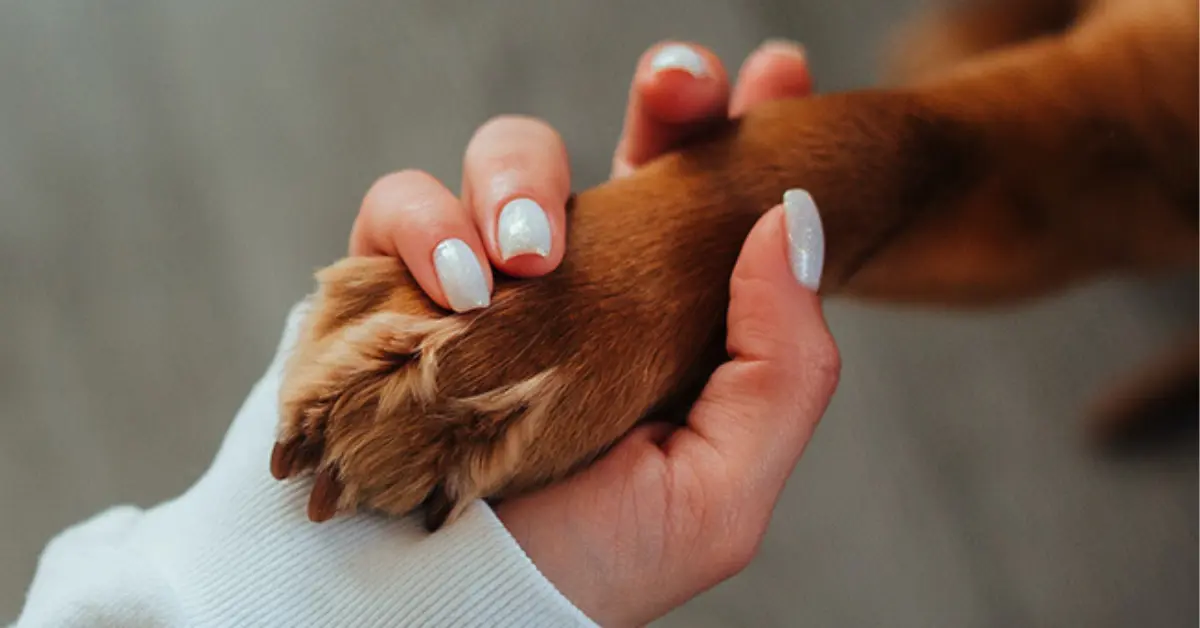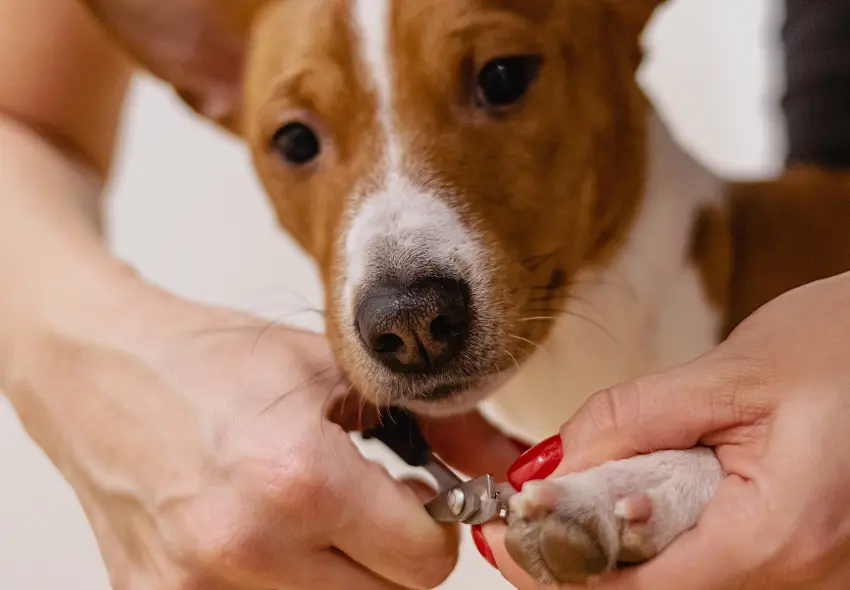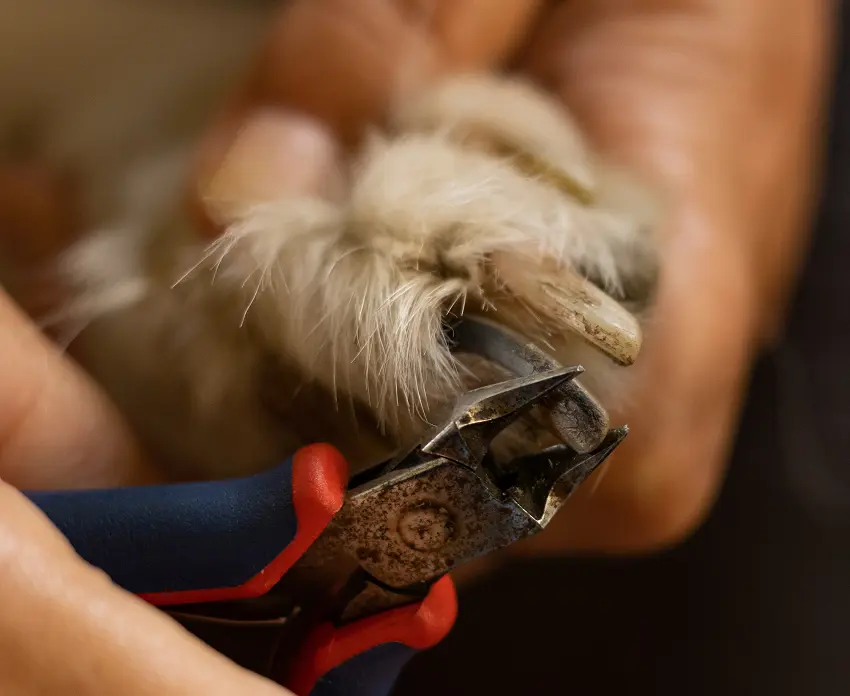Dog Nails Sharp After Clipping? 5 Ways To Solve The Problem
Are your dog nails sharp after clipping? This is a common problem with very easy solutions.
When clipping a dog’s nails, we cut a specific length, which will leave a rough edge. This rough edge can also be sharp, depending on the angle of how you cut the nail and how sharp the clippers are.

The problem with these sharp dog nails is they can damage wooden floors, cause fraying on carpets, and inflict scratches on people around them.
If you’re also dealing with the same problem, I discussed here a few easy solutions to help you out. Don’t worry, the solutions to sharp nails after clipping are as common as the problem itself.
Why are my dog’s nails sharp after clipping?
There are two major reasons why your dog’s nails are sharp after clipping: the wrong tool and lack of physical activities.
In most cases, dull nail clippers will almost always leave sharp edges on your dog’s nails. This is more common in large breeds since they have thicker and tougher nails.
Nail clippers with low-quality blades will lose their edge fast. And if you use the dull blade on your dog’s nails, it will leave jagged and sharp edges – much like using dull scissors to cut paper.
On the other hand, a lack of physical activities will cause a dog to miss out on having its nails filed naturally. It’s because walking on rough and hard surfaces helps remove the sharp edges of your pet’s nails after clipping.
Some of these surfaces are concrete pavement outdoors or the dirt on your lawn. These surfaces wear out the edges of your dog’s nails, giving them a naturally polished finish.
So if your dog always stays indoors and isn’t subjected to physical exertion, the sharp edges of its nails after clipping will remain.
How to fix your dog’s sharp nails after clipping

If your dog’s nails are still sharp after clipping, the following are the easy solutions you can try:
1. Use a nail grinder
Nail grinders are the go-to solution of pet owners when it comes to sharp dog nails. It’s also known by the name Dremel, which is one of the most famous nail grinder brands in the market. Read more: Quietest Dremels For Dog Nails Reviews
Unlike nail clippers, dog nail grinders don’t use blades. Instead, it has a rotating sanding drum that will sand off your pet’s nails.
In this manner, the sharp edges can be removed and polished. It will also let you shape the tips of your dog’s nails.
Moreover, pet nail grinders can be used as a touch-up after clipping or as a standalone grooming tool. You can swap traditional nail clippers with a nail grinder to get rid of sharp edges for good.
However, just note that nail grinders take more time to use. Since it sands the nails away, you have to spend a lot of time if you’re dealing with overgrown claws.
The upside here is that nail grinders are safer than clippers in the sense that it’s impossible for you to accidentally cut the quick.
2. Use a sandpaper
If you don’t have a nail grinder handy, a small piece of sandpaper will do. Basically, it’s like a nail grinder, but you have to do the grinding manually.
After clipping, use a small piece of sandpaper to polish your dog’s nails. In fact, you can even train your dog to self-polish its claws by having it scratch on a large piece of sandpaper.
Overall, this is a great alternative to nail grinders, especially if your pet gets scared of the tool’s buzzing sound. But since you’re doing it manually, it will consume a lot of time to finish polishing all your pet’s claws.
Make sure that you use high-grit sandpaper for a more polished result. Also, high grit sandpaper (at least 80 grit) is less irritating for your dog.
3. Use an emery board
The emery board in your manicure kit can also solve your dog’s sharp nails after clipping. Simply file your pet’s nails with it, staying gentle to prevent any irritations.
When doing this, stop after a few strokes and run a finger through your dog’s nail. This way, you can check which part is still rough or sharp.
If you don’t have an emery board, a cheap nail file will do the same justice. Just make sure that you have a few pieces if you have a large dog.
4. Take your dog on regular strolls
If you want to make nail filing fun for your dog, regular walks around the neighborhood would be an excellent alternative. As your dog walks, its nails scratch the ground and the sharp edges become dull.
However, you should know that this is only effective if your dog is barefoot. Putting on booties on your pet will only defeat the goal.
Since your doggo would be walking barefoot, make sure that the pavement isn’t hot. With this, you should time your walks before dusk or dawn.
5. Let your dog dig
Is your dog obsessed with digging? If so, you can use this habit to help remove the sharp edges of its nails naturally.
As your dog digs through the soil, its nails get worn off. This is also a good way to keep your pet’s nails short, so you don’t have to clip them too often. Please read more: Why Is My Dog Digging Holes All Of A Sudden
However, make sure that your dog’s digging is contained. You can set up a sandbox, so your pet won’t dig under the fence or on your flower bed.
Mistakes to avoid when clipping your dog’s nails

Nail clipping is an important part of grooming a dog. To ensure that you’re doing it right, you should avoid the following mistakes:
1. Not clipping regularly
Letting your dog’s nails grow for too long will make it difficult to clip. Also, the overgrown claws will dig into your dog’s foot pad and cause excruciating pain.
The rule of thumb is to clip your dog’s nails once a month. However, some dogs grow their nails faster, which requires more frequent clipping.
Basically, if your dog’s nails are already tapping on the floor, it’s due for a trim.
Clipping your canine’s nails regularly is also beneficial for you. Since you only have a short length to remove, clipping would be faster even when using nail grinders.
2. Not getting started early
Dogs that aren’t desensitized to nail clipping early would become uncooperative and even aggressive during groom time. This is a big hassle for you, especially if you have a large breed.
To prevent this, you should get your pet used to nail clipping as early as puppy days. This way, your canine will be more cooperative as it grows older.
3. Being too harsh while nail clipping
Holding your dog’s paws too tight, restraining your pet for too long, or punishing your dog won’t help your nail clipping task. Worse, it will make your pet hate grooming.
It’s important to be as gentle as possible when clipping your dog’s nails. Always check how tight you’re holding your dog’s paws and if your pet is comfortable during the process.
And to ensure that your doggo is having a positive experience, you should give food rewards while having its nails clipped.
Can you file down a dog’s nails?
Filing a dog’s nails is a good idea. It helps keep the claws on a healthy length without the need to exert too much force on the canine’s paws.
To keep nail filing faster, you should do it regularly. You can file your dog’s nails once a week, so the length won’t accumulate.
Moreover, you can file your pet’s nails after clipping to remove the jagged edges.
Is it better to clip or grind a dog’s nails?
Clipping and nail grinding are both acceptable ways of grooming your dog’s claws. Both are effective and have their own upsides.
With nail clipping, you can remove a specific length at once. It’s also the traditional option of professional groomers.
However, you have to be extra careful when using nail clippers. Make sure that you know where your pet’s quick is to avoid cutting it and causing injuries.
On the other hand, grinding sands the nails, so you can remove the length little by little. It’s a good option for pet owners with arthritic hands and those worried about cutting the quick.
However, nail grinders take more time to use. Also, some dogs aren’t amused about its buzzing sound.
Why are my dog’s nails splintering?
Splintering dog nails can be due to a slew of reasons. The most common are poor nutrition, overuse, and the presence of infection.
If you suspect any of these, you shouldn’t hesitate to consult the vet. However, make sure that it’s not the nail clipper that’s causing the splinters in the first place. Please read more: Quiet Dog Clippers Review
Conclusion
A dog nails sharp after clipping is common and very easy to fix. You can use a nail grinder, sandpaper, a nail file, and so on.
Whatever solution you prefer, always utilize it gently. This way, your pet won’t associate nail grooming with a negative or traumatic experience.
Do you have other dog nail clipping tips to share? Let us know!
